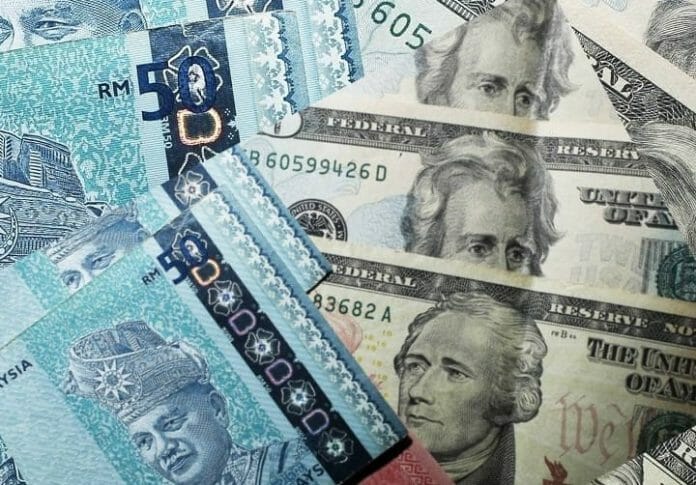The ringgit rose marginally against the US dollar at the close after a muted trading session as optimism was dented by hawkish comments from some US Federal Reserve (Fed) officials on the interest rate outlook.
Investors were also cautious ahead of inflation data from the United States later in the week.
the local note improved slightly at close on Tuesday to 4.3715/3755 against the greenback from Monday’s close of 4.3720/3765.
SPI Asset Management managing partner Stephen Innes said the upcoming US Consumer Price Index (CPI) data due on Thursday prompted traders to be in wait-and-see mode. The CPI numbers will determine the tone of the Fed’s monetary policy going forward.
“While the headline (number) is expected to decline, concerns remain on the reading of core services, which has remained sticky due to strong US jobs reports.
“I think once we clear this hurdle, the ringgit can rally more on the China reopening impulse,’’ he told Bernama.
China is also expected to release its trade data tomorrow as well as its CPI and producer price index on Thursday, which are set to add volatility to the currency market.
Meanwhile, the ringgit traded lower against a basket of major currencies.
It fell against the Singapore dollar to 3.2856/2891 from 3.2793/2832 at Monday’s close and weakened vis-à-vis the Japanese yen to 3.3160/3196 from 3.3009/3045 previously.
The local currency depreciated versus the British pound to 5.3258/3307 from 5.3124/3179 yesterday and eased against the euro to 4.6972/7015 from 4.6636/6684.
The U.S. dollar held its ground on Wednesday, in spite of downward pressure from lower bond yields and higher stocks, as traders waited on this week’s U.S. consumer price data to see whether it will confirm that inflation is in retreat.
The Australian dollar nudged about 0.3 per cent higher to $0.6912 after data showed the annual pace of inflation increased to 7.3 per cent in November, leaving room for more rate hikes. The New Zealand dollar also crept up 0.2 per cent to $0.6380.
The U.S. dollar was steady elsewhere, loitering just above a seven-month low on the euro at $1.0737 in the lead-up to U.S. inflation data due on Thursday.
The greenback has lost about 11 per cent against the common currency since hitting a 20-year peak in September, as investors have started to anticipate easing inflation and with it a falling dollar as the need for more interest rate hikes wanes.
But for the past month or so the common currency has struggled to make headway, and traders have been cautious in selling dollars while the U.S. Federal Reserve continues to promise hikes and the global economic outlook is bleak.
“It’s becoming harder to argue a stronger dollar story, very clearly,” ING chief economist Rob Carnell said.
“But it still remains a difficult one to argue a really strong euro story,” he said, which is holding back wider losses for the dollar as the euro/dollar pair sets the broad tone.
The dollar was steady at 132.23 Japanese yen and $1.2161 per British pound. U.S. government bond yields, which have been attracting investors to the dollar, fell overnight and upbeat sentiment in equities lifted stockmarkets.
Federal Reserve chair Jerome Powell did not give any policy clues during a panel discussion in Stockholm overnight, and with other Fed officials saying their next moves will be data-dependent, investors are keenly focused on U.S. CPI data.
“Another downward surprise to the core CPI would cement the deceleration trend,” Commonwealth Bank of Australia strategist Joe Capurso said.
“The U.S. dollar would ease further because another soft core CPI would encourage markets to continue to shift pricing for the (Fed’s) 2 February meeting from a 50 basis point increase to a 25bp increase.”
Futures pricing has been bumpy, but indicates markets’ now lean toward a 3/4 chance of a 25 bp hike next month.
China’s re-opening has also supported sentiment and lifted Asia’s currencies against the dollar.
China’s yuan was a whisker short of a five-month high at 6.7814 in offshore trade early on Wednesday.
The Singapore dollar has scaled 19-month highs this week and the Thai baht nine-month tops in anticipation of tourism picking up as China’s borders open.









